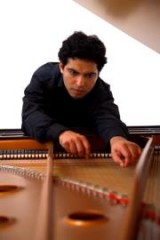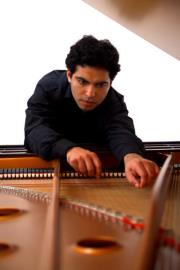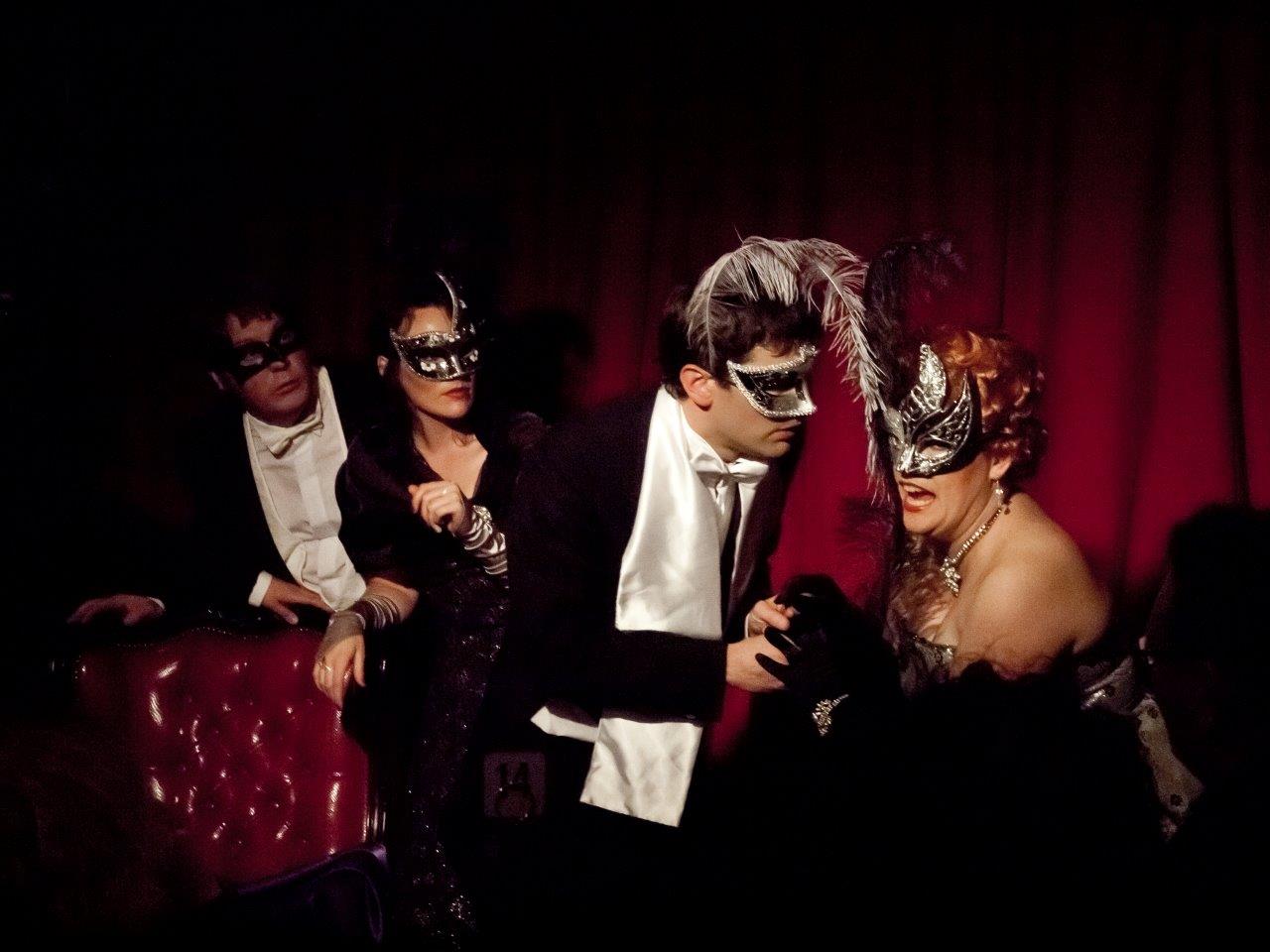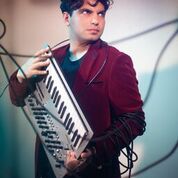‘Generations’: creative collaboration narrows the gap
 On Friday 18th November, pianist Zubin Kanga will present a concert of solo piano works that he has called ‘Generations’. There is a duality to this title as the works that Kanga will play looks back at the composers who wrote them whilst looking to the future in the aesthetics they represent. The material is drawn from composers who have a connection with Sydney Grammar School either as Old Sydneians, as composers-in-residence or as staff. The programme is also notable for illustrating the concept of ‘Creative Collaboration’ – an elemental phrase to describe the topic of Kanga’s PhD thesis which he is undertaking at the Royal Academy in London.
On Friday 18th November, pianist Zubin Kanga will present a concert of solo piano works that he has called ‘Generations’. There is a duality to this title as the works that Kanga will play looks back at the composers who wrote them whilst looking to the future in the aesthetics they represent. The material is drawn from composers who have a connection with Sydney Grammar School either as Old Sydneians, as composers-in-residence or as staff. The programme is also notable for illustrating the concept of ‘Creative Collaboration’ – an elemental phrase to describe the topic of Kanga’s PhD thesis which he is undertaking at the Royal Academy in London.
Music is a vital part of primary and secondary education at Sydney Grammar and the fact that the school has produced some of the nation’s finest musicians is evident from the featured composers – Nigel Butterley (Class of 1951) Ross Edwards (Class of 1961), and Elliott Gyger (Class of 1985), emerging composer Alex Pozniak (1999), Year 12 student Phil Jameson, past Composer-in-Residence Daniel Rojas and the school’s Artistic Director of Music, composer and Harvard PhD Nicholas Vines.
Voted ‘Best Newcomer’ at the 2010 ABC Limelight Awards, Zubin Kanga’s “fiery charm and virtuosic fluency” (SMH) is gaining him an international reputation as one of the most sought-after young performers of classical contemporary music. Kanga performs regularly with elite new music ensembles in Australia (Ensemble Offspring, Halcyon) and in the UK (London Sinfonietta, Kreutzer Quartet), along with solo performances in Australia and Europe.
Exploring the concept of ‘new music’ Kanga observes that “All music was new music at one point – it’s about pushing the boundaries and trying out new things. A lot has changed in the last 50 years. Contemporary music is very diverse and its audiences don’t even necessarily overlap. In America you have Steve Reich and Philip Glass, they have their own audiences which overlaps with a lot of popular music and film music. Then you have the modernists like Boulez who is still a very central figure there… and then there are all these people in-between – the spectralists in France who are playing with the nature of sounds, analysing sounds and getting music out of that. What makes ‘new music’ so interesting is that it is so diverse”.
He went on: “All the periods of music reflect what was going on more broadly in their culture at the time. The classical period was about balance and symmetry – you can see it in the architecture and the philosophy. You can hear Kant and Rousseau in Mozart and the wit of Pope in Haydn…. and so in the 20th century, music reflects not just what is happening in the arts but in the sciences as well, with discoveries and the foundations of current thinking – like quantum theory and the concepts of cause and effect. That filters into John Cage – who got interested in making music by rolling dice – our culture is very diverse and contemporary music reflects that. The Post-Modern aspect includes elements from the past. The collage becomes a commentary on that old music rather than being a pure pastiche….. and there are a few examples of that in the concert….Phil Jameson’s Fugue is very much in the style of Bach; the preceding Prelude is in a much more modern style, influenced by Messiaen and Bartok, and so the piece as a whole is more a commentary on what a Prelude and Fugue is rather than an attempt to copy a model”.
Despite the best of efforts, audiences can be extraordinarily resistant to accepting contemporary music. Often, music has to be heard several times before even beginning to be liked or understood. Kanga believes that performers and companies have a responsibility to keep performing new music to give audiences a chance to hear it. “Some of the more subtle music requires repeated listening and more time. It’s up to the performers to keep performing, to do their best to sell new music to audiences, and to show its positive aspects”.
This segues into the topic of Kanga’s PhD thesis – the collaboration between the composer and the performer in the commissioning of new music. Three works from the programme have been used as some of the case studies that illustrate the dynamics of this process – Uncanny Valley by Nicholas Vines, …out of obscurity by Elliott Gyger and Entre Bajos y Alturas by Daniel Rojas. Winning $40,000 from the prestigious Michael Kieran Harvey piano scholarship enabled Kanga to commission these three works. “They were specifically commissioned as pieces to innovate with piano sounds, preparation and extended techniques. Gyger, Vines and Rojas are all very different innovators. Collaboratively we’ve found some really interesting new sounds”.
So what does a creative collaboration involve? “Part of my PhD is to show just how much of the creative process is carried by the performers, both in composition and interpretation. There’s been a lot of work on the creative work of performers, describing what they do, which is much more difficult to observe and to study than what composers do. It’s quite a new field of research that has only happened in the last 15 years. The study of collaborative creativity is only about 3or 4 years old so it’s a very new field with only a few papers and researchers. In the commission it’s important to be specific with the briefs. I also insist as a condition of working with me that we work collaboratively and I record the whole process as part of my research. Because I’m involved at every stage of the process, I can see if something’s going awry or can’t be played and I can work it out early in the process. Where I haven’t liked a work or there have been difficulties with it, the composer has disappeared, worked alone and suddenly turned up with something completely different to what was discussed”.
“Having the film footage is really interesting because you can see what actually happened along with some things that can’t be transcribed – like body language”. It follows that there is a substantial element of psychology to the study. Kanga says “Yes it is quite inter-disciplinary. The methodology includes studying the individuals and how they work, their personalities and the diverse factors that are in play. Then of course there are all the musical things – the composer’s world, performance practice, their style. It’s a study not only of my own practices but of the practice of a lot of other musicians – how performers work with a composer to build these new pieces – what are the pressures and other factors that affect it and how does it change the relationship. A lot of it boils down to personality, but some of the things I thought would be important aren’t – like age differences or professional status – if you don’t make it into a difference it becomes less intrusive”.
“Collaborating with the composer is also about learning and passing on the performance practices of the piece. This knowledge is very important and is easly lost. It is important to document the oral history of practice performance. It’s very difficult for the oral tradition to survive, especially when there are so few people doing it”.
SdeS
Tickets: $20/$10 Book on (02) 9332 5895






